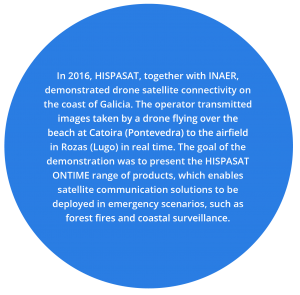BUSINESS
CLIENT ENGINEERING
HISPASAT o ers highly specialised and personalised engineering services to its clients, providing users with high added value when de ning and designing cutting-edge customised solutions that will allow them to develop and carry out their business plans successfully.
During 2016, the client engineering teams in Madrid, Rio de Janeiro and Mexico worked intensely to be able to o er their clients the most advanced solutions in the eld of satellite communications, a sector that is experiencing an increasing number of challenges and opportunities year after year. As a result of this effort, in 2016 more than 1,700 network designs were made, producing more than 600 transmission plans and approving over 100 new professional ground stations that operate with satellites of HISPASAT’s eet.
NEW SERVICES AND ADVANCED SOLUTIONS
Throughout 2016, HISPASAT contributed to the development of advanced satellite solutions for their clients, a few particularly noteworthy examples being the coverage extension systems for cellular telephone networks (cellular backhaul), Internet access via satellite for residential users and trunk network connections (IP Trunking). It is also worth highlighting the advanced solutions for the Internet of Things (IoT), which encompasses all sensors and objects connected to the network, and in emergency communications for situations such as natural disasters, an area in which satellites have become particularly relevant over the past few years, and in which HISPASAT is becoming more and more present through their OnTime products.






